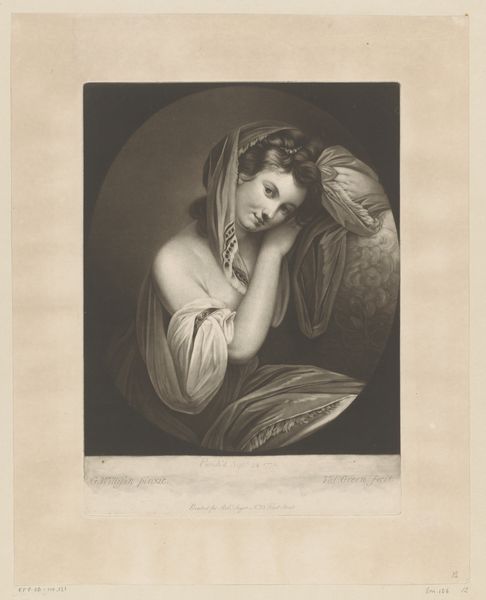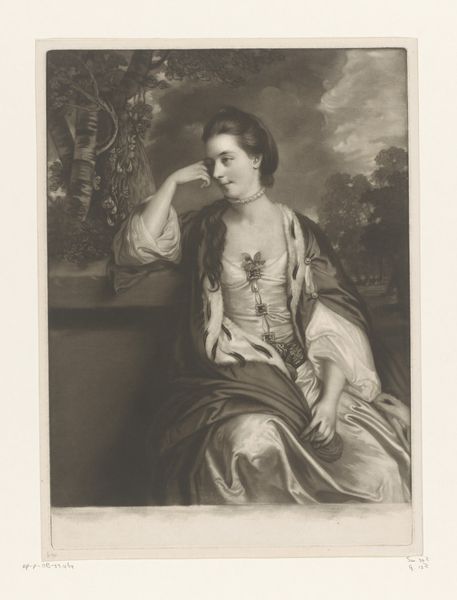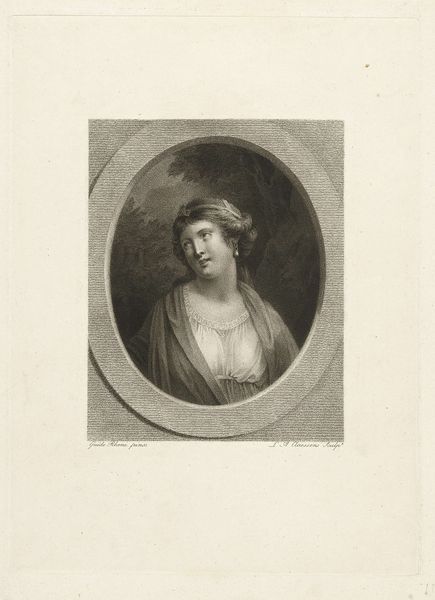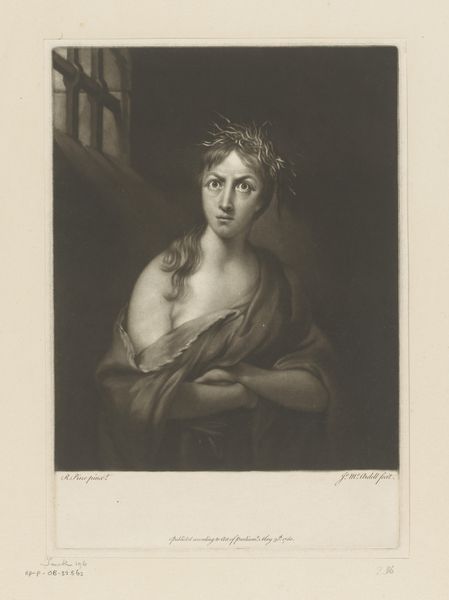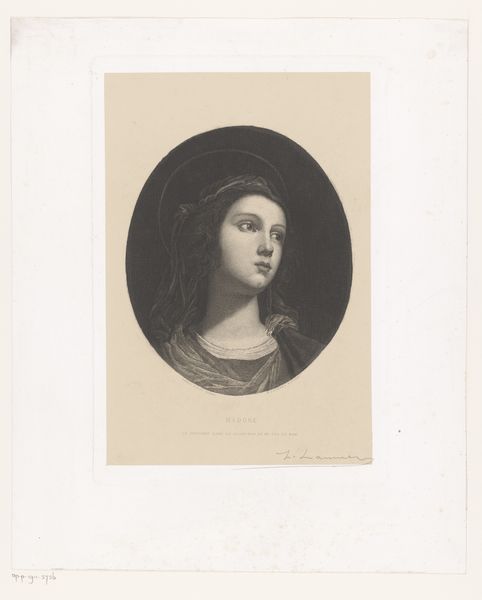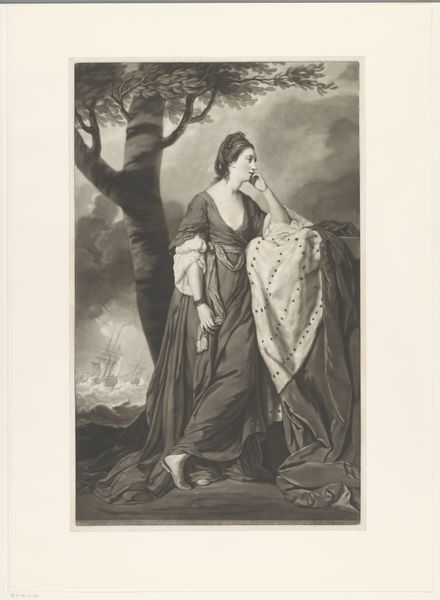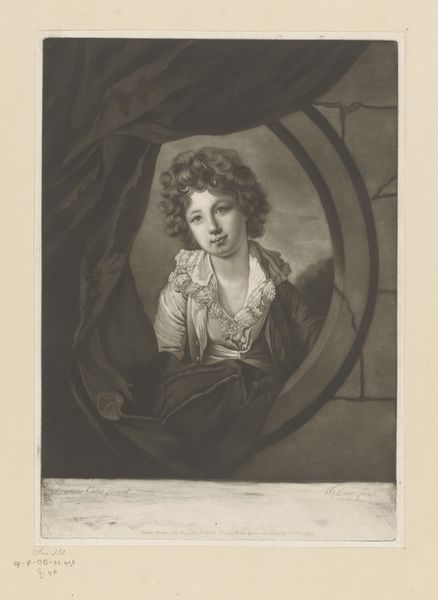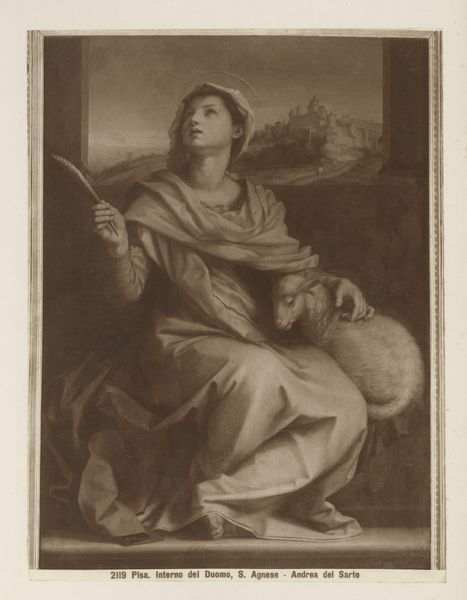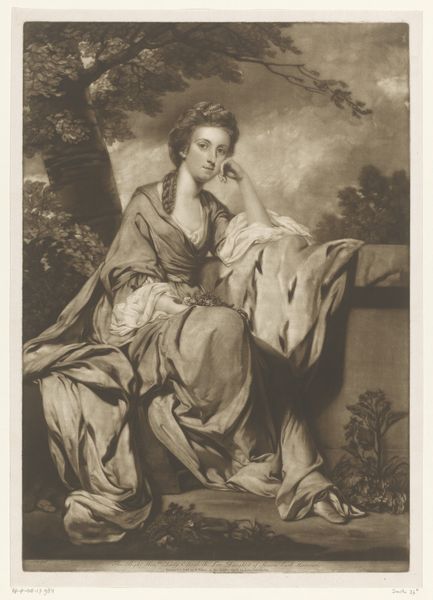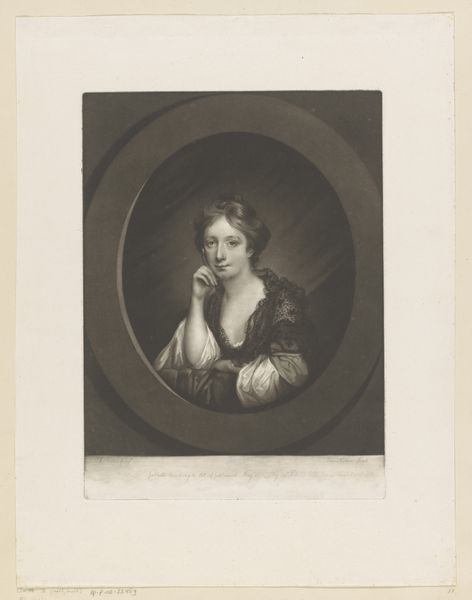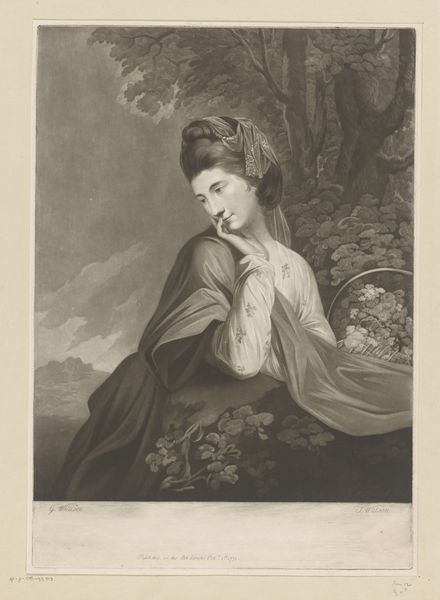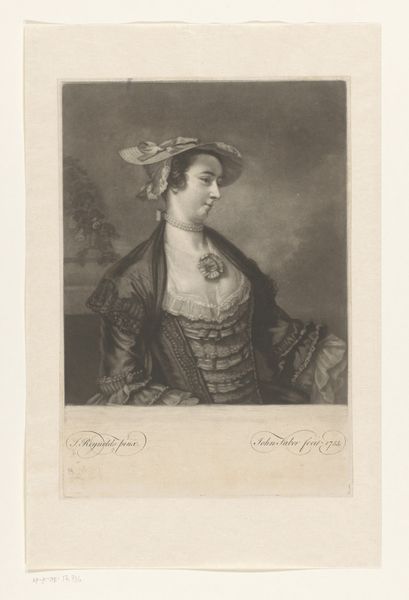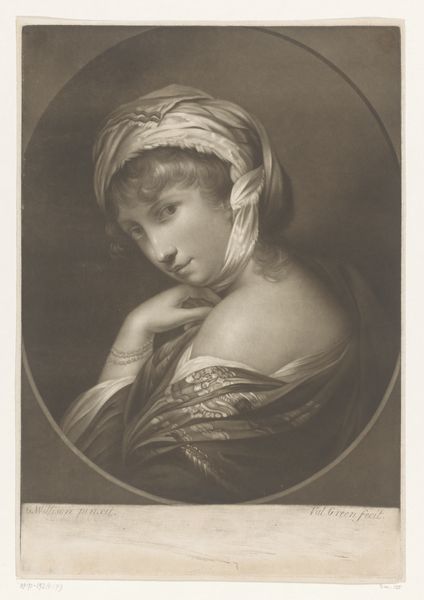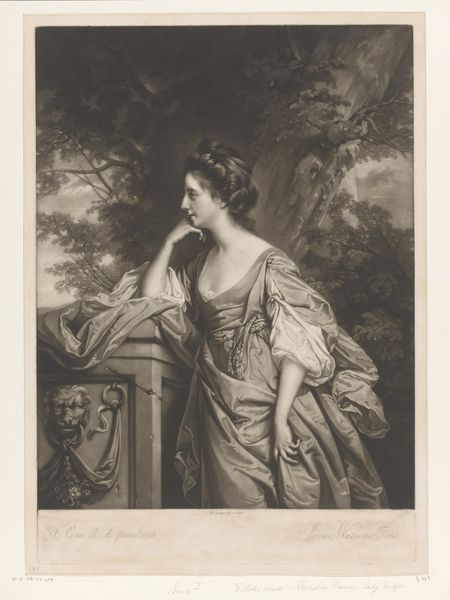
Portret van een onbekende vrouw, bekend als mevrouw Fordyce 1746 - 1766
0:00
0:00
engraving
#
portrait
#
figuration
#
11_renaissance
#
historical photography
#
musical-instrument
#
engraving
#
rococo
Dimensions: height 354 mm, width 252 mm
Copyright: Rijks Museum: Open Domain
Curator: What strikes me is not merely the idealized representation of "Mevrouw Fordyce," but the material realities embedded in this 18th-century engraving by Richard Purcell. Editor: Right, it's titled "Portrait of an Unknown Woman, Known as Mrs. Fordyce." It looks like it's from between 1746 and 1766, and it's at the Rijksmuseum. The woman’s very poised, but it looks like a subdued grey print. How would you interpret that in light of its place in art history? Curator: Forget art history for a moment, and let's consider the means of production. This engraving, how was it circulated? Who had access? It democratized image-making by offering reproducible copies to a burgeoning middle class with more disposable income. What kind of labor went into it? How does this compare to, say, a one-of-a-kind painted portrait available only to the elite? Editor: So, instead of just thinking about who this Mrs. Fordyce was, it's more important to look at the process of making the portrait itself and who could access it. You mean that an engraving of her was almost more important because of its availability? Curator: Exactly! And consider the musical instrument she holds. Its presence isn't simply decorative. How was it seen and played during that period? Does the engraving’s circulation of a likeness affect cultural norms of women being musical, delicate and accomplished in these skills? Editor: Hmm, that is interesting... almost as if this kind of widespread visual representation helped make 'acceptable' social and cultural ideals for women to become mainstream and almost fashionable. Curator: Precisely! So, we shift from aesthetic admiration to analyzing art’s function in shaping societal norms through mass reproduction. The very act of engraving – the labor, the skill, the materials – speaks volumes about 18th-century culture. Editor: Okay, I get it now. It’s less about the woman, but how the work *was* made and seen that makes this artwork historically interesting. Thanks for making me think beyond the surface!
Comments
No comments
Be the first to comment and join the conversation on the ultimate creative platform.
